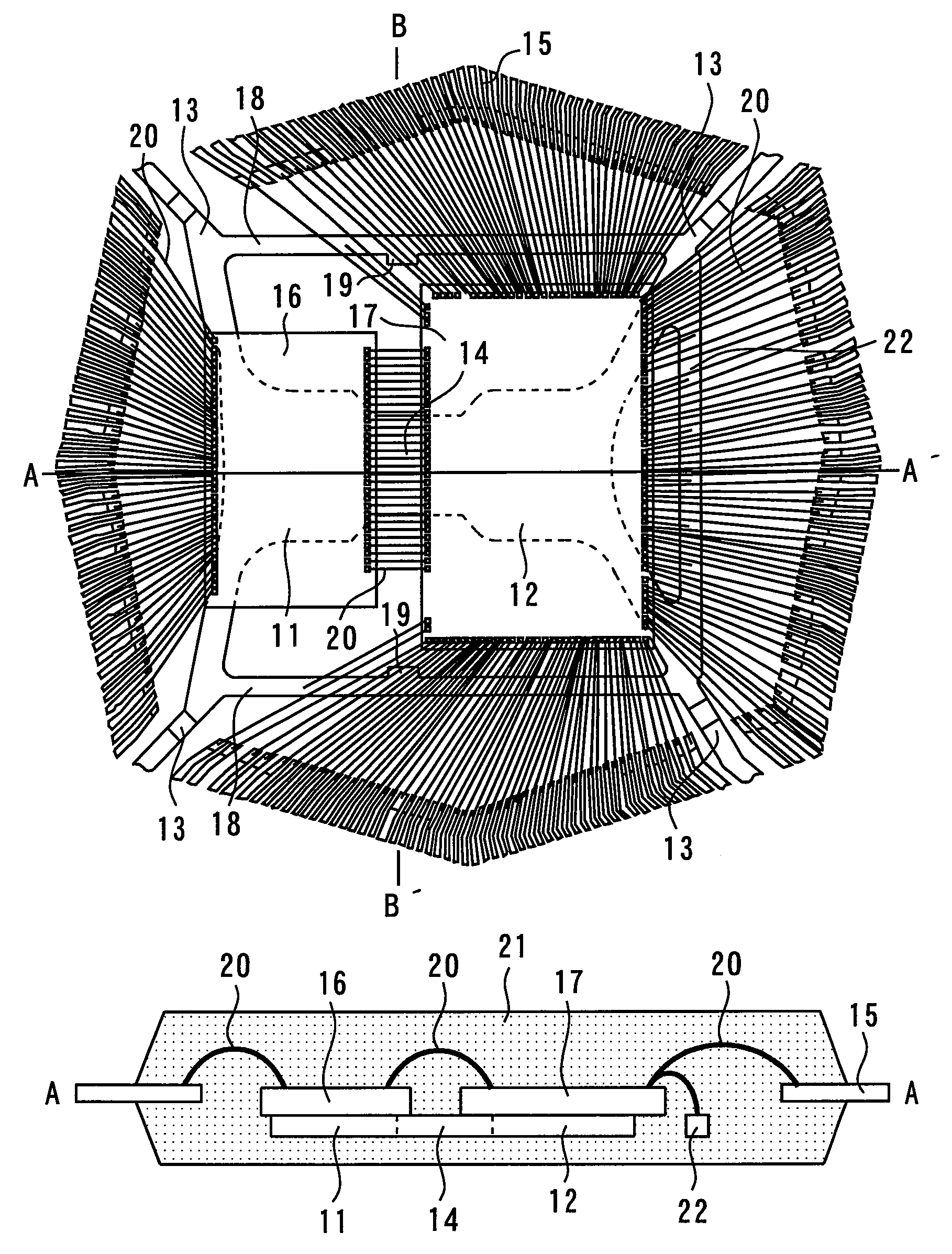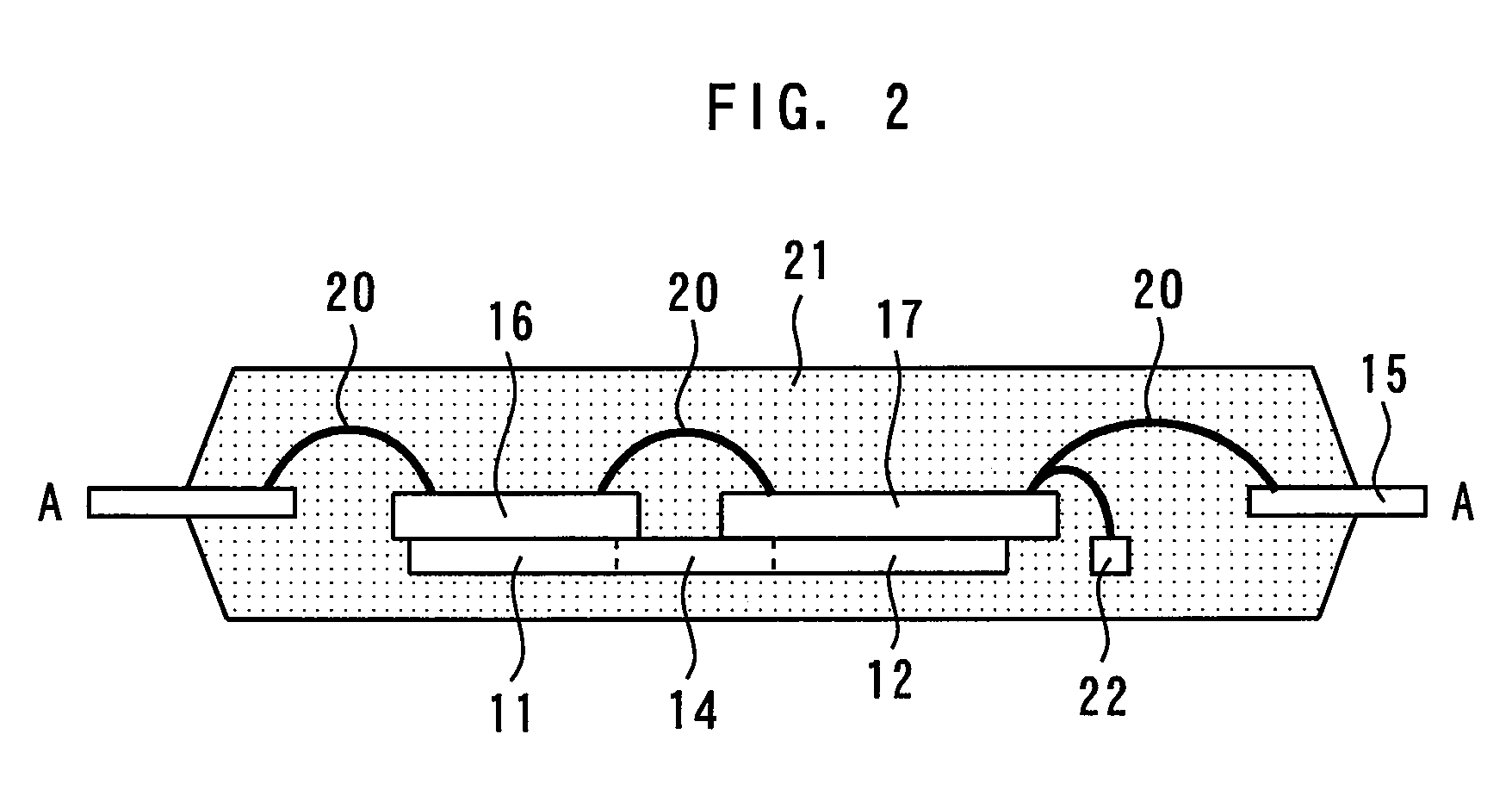Semiconductor device
a technology of semiconductor devices and semiconductors, applied in semiconductor devices, semiconductor/solid-state device details, electrical devices, etc., can solve the problems of difficult resin injection between wires and die pads, liable to occur peeling between mold resin and the back of chip mounting surfaces of die pads, etc., to achieve easy resin injection and easy chip alignment.
- Summary
- Abstract
- Description
- Claims
- Application Information
AI Technical Summary
Benefits of technology
Problems solved by technology
Method used
Image
Examples
first embodiment
[0023]FIG. 1 is a plan view showing the interior of a semiconductor device according to an embodiment of the present invention, FIG. 2 is a cross-sectional view along A-A′ of FIG. 1. FIG. 10 is a cross-sectional view along B-B′ of FIG. 1. A first die pad 11 (first part) and a second die pad 12 (second part) are arranged side by side. The first and second die pads 11 and 12 are supported by hanger leads 13 and both pads are interconnected by a connection lead 14. The first and second die pads 11 and 12, connection lead 14 and hanger leads 13 constitute a metallic mounting member in which metal members are integrally molded. A plurality of inner leads 15 are arranged around the first and second die pads 11 and 12.
[0024]A first chip 16 is mounted with its principal plane superimposed on the first die pad 11 on the principal plane of the first die pad 11 by means of a paste (not shown). Furthermore, a second chip 17 is mounted with its principal plane superimposed on the principal plane...
second embodiment
[0047]In this second embodiment, as shown in FIG. 7, recessed parts 24 are provided in the connection lead 14 as marks instead of providing the marks in the bars 18 as in the case of the first embodiment. That is, the mounting member has the connection lead 14 (third part) located between the first and second chips 16 and 17 for coupling the first die pad 11 (first part) and the second die pad 12 (second part). The sides where the first die pad 11 is contiguous to the second die pad 12 via the connection lead 14 are provided with recessed parts 24 which are recessed in an inward direction of the sides. The bottom face of this recessed part 24 is located at least at the connection lead 14. As shown in FIG. 8, the first and second chips 16 and 17 are mounted on the die pads 11 and 12. The rest of the configuration is the same as that of the first embodiment. When the chips 16 and 17 are mounted on the die pads, the use of the recessed parts 24 as marks in this way makes it easier to a...
PUM
 Login to View More
Login to View More Abstract
Description
Claims
Application Information
 Login to View More
Login to View More - R&D
- Intellectual Property
- Life Sciences
- Materials
- Tech Scout
- Unparalleled Data Quality
- Higher Quality Content
- 60% Fewer Hallucinations
Browse by: Latest US Patents, China's latest patents, Technical Efficacy Thesaurus, Application Domain, Technology Topic, Popular Technical Reports.
© 2025 PatSnap. All rights reserved.Legal|Privacy policy|Modern Slavery Act Transparency Statement|Sitemap|About US| Contact US: help@patsnap.com



